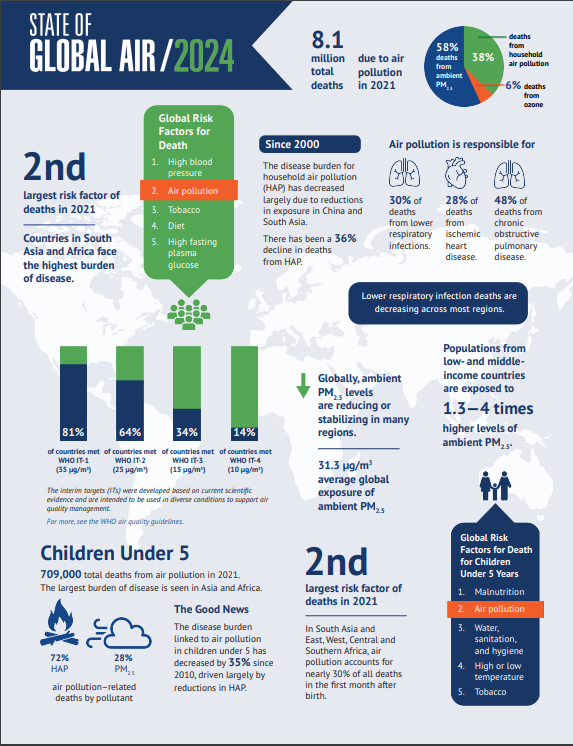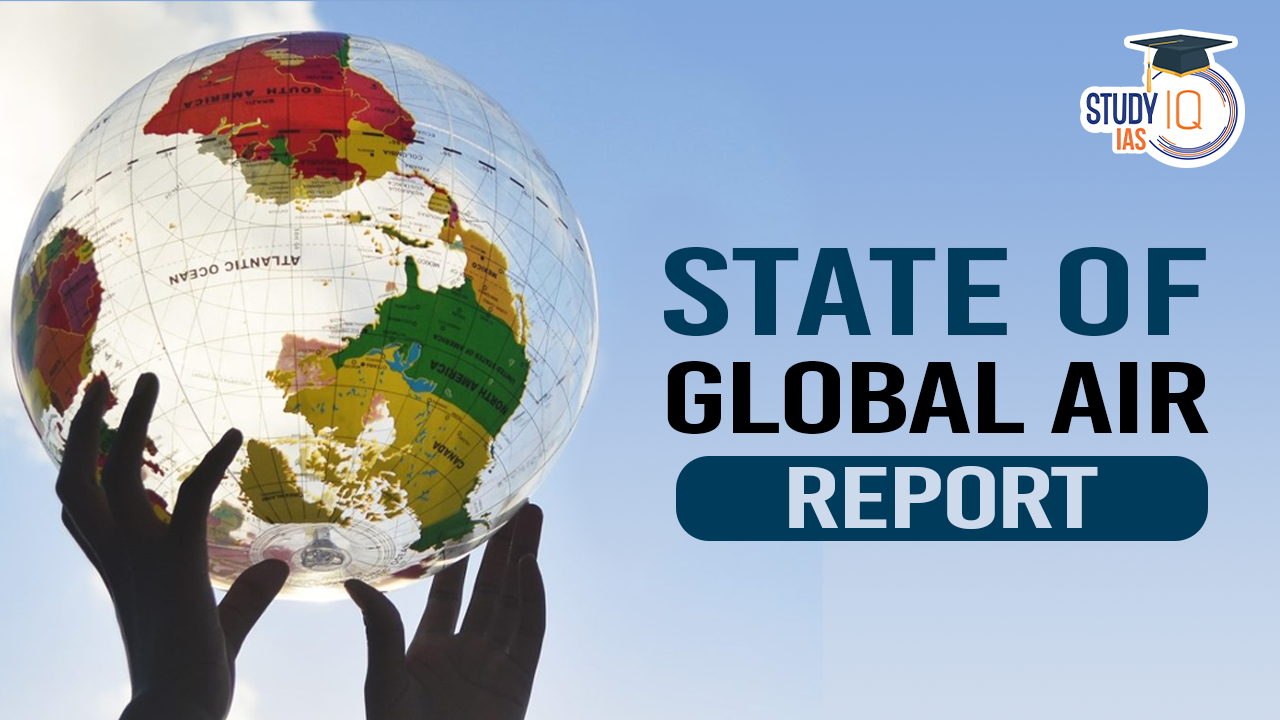Table of Contents
Context: Recently, the State of Global Air (SoGA) Report 2024 showed that air pollution has become the second leading global risk factor for death.
India’s Situation in Air Pollution
- India reported 2.1 million deaths due to air pollution.
- India reported the highest number of pollution-linked deaths in children under five, with at least 169,400 deaths in this demographic.
- Air pollution in India has been a persistent issue, especially noticeable during winter when smog blankets large parts of the country.
Inadequate Measures
- Efforts to combat air pollution in India have largely been reactive and insufficient, such as spraying water to reduce dust and implementing the odd-even vehicle scheme.
- Despite clean air plans in many cities, there has been a failure to adequately link pollution with public health, leading to insufficient long-term strategies.

Impact on Children
- Children are particularly vulnerable to air pollution due to their higher air intake per kilogram of body weight, developing organs, and weaker defence mechanisms.
- Exposure to pollutants increases the risk of ailments like asthma, upper respiratory tract infections, childhood leukaemia, and high blood pressure in children.
| Facts |
|
Hope and Progress
- Since 2000, the global death rate linked to air pollution among children under five has decreased by 53%.
- This reduction is attributed to increased access to clean cooking energy, better healthcare, improved nutrition, and heightened awareness.
- Stricter air quality policies and the promotion of hybrid and electric vehicles in regions like Africa, Latin America, and Asia have shown measurable benefits.
Lessons for India
- With 42 out of the 50 most polluted cities globally, India faces a significant challenge.
- A 2022 study indicated that even municipal employees in India have low awareness of air pollution’s link to serious health conditions like cancer and heart diseases.
- To address this issue effectively, India must prioritise the health of its citizens, particularly children, in its pollution control strategies.
Conclusion
- The report emphasises the need for comprehensive and sustained action to combat air pollution.
- Prioritising public health, particularly of the most vulnerable groups, is essential in developing effective solutions to this pressing issue.


 Phenome India Project: Mapping India's H...
Phenome India Project: Mapping India's H...
 UDAN Scheme, Objectives, Funding and Ach...
UDAN Scheme, Objectives, Funding and Ach...
 Indus Water Treaty 1960 Suspended by Ind...
Indus Water Treaty 1960 Suspended by Ind...





















